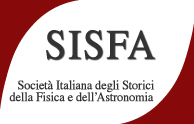Speaker
Description
In 2004 and 2012, with the last pair of Venus transits across the Sun, there was a renewed interest in the history of this rare astronomical phenomenon. However, not enough attention was paid to the transits of 1874 and 1882, even though, in 1869, they had been described as “the greatest astronomical event of the century”. Indeed, the two transits of the 19th century represent one of the milestones in the history of astronomy. In fact, they not only made possible to obtain a value for the Earth-Sun distance with an uncertainty of less than 1% (as already requested by Halley in 1716), but also provided an extraordinary opportunity for testing new technologies (such as photographic plates), stimulated the development of new astronomical devices (including Houzeau’s heliometer with unequal focal lengths), and facilitated collaboration among European powers and emerging nations such as Brazil, Argentina, and New Zealand. With old challenges such as the black-drop effect, renewed searches for an alleged satellite, and journeys to distant lands from Cape Horn to Hawaii (trough meticulously organized expeditions where nothing was left to chance), the transits of 1874 and 1882 constituted not only a fundamental scientific venture but also a popular event, managing to capture the interest of the general public, and thus contributing in heightening widespread awareness of astronomy. 150 years after the 1874 event, here is their story.

